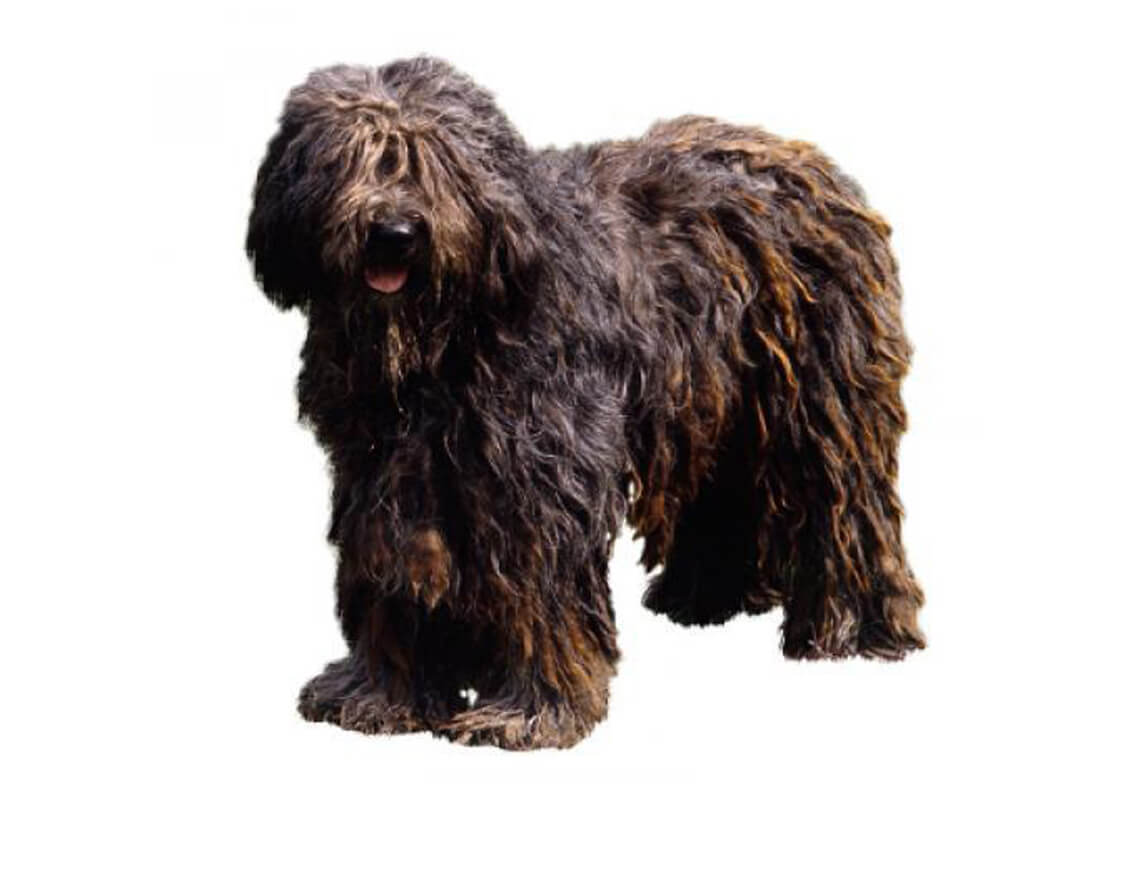
The Bergamasco breed's coat is the most striking feature of this dog. It is greasy, long, abundant and hangs down in loose mats. Coat colours include grey, black, Isabella (pale/dappled fawn) or light fawn. Large and powerful, dogs stand at 58-62cm when fully grown and females at 54-58cm. Adult dogs weigh 32-38kg and females 26-32kg.
The need-to-know
- Dog suitable for experienced owners
- Extra training required
- Enjoys vigorous walks
- Enjoys walking more than two hours a day
- Large dog
- Minimum drool
- Requires grooming every other day
- Hypoallergenic breed
- Very vocal dog
- Guard dog. Barks and alerts
- May require training to live with other pets
- May require training to live with kids
Personality

The Bergamasco dog breed's guarding roots are still in evidence today: he is naturally cautious and vigilant and has a strong protective instinct. Early socialisation is therefore crucial, together with experienced handling. Not an ideal breed for the first-time owner, he requires ongoing training and has a strong desire to please.
History and Origins

An ancient herding and guarding breed, the Bergamasco dog breed is thought to have originated in Persia thousands of years ago where he accompanied nomadic farmers, moving the flocks in often harsh conditions and guarding them against predators. Some nomads settled in the Italian Alps and the dogs took the name of the region where they were found: Bergamasco. The breed almost died out with a decline in post-war wool production in Italy, but was revived by dedicated breeders.
Nutrition and Feeding

Large breed dogs, as well as having large appetites, benefit from a different balance of nutrients including minerals and vitamins compared to smaller-breed dogs. Some large breeds, such as the Bergamasco, are also prone to bloating and stomach problems; smaller, more frequent meals can help minimise this risk.
Exercise

Around an hour's exercise is needed daily, although this energetic breed has plenty of stamina and will happily accept more if you can offer it. Remove any debris from the coat when you return home!
Other Information

Health and common issues
The Bergamasco appears to be a very healthy breed, with no widely recognised breed specific problems.
Best family dog breeds
While many dogs are traditionally thought of as being good with children, all dogs and children need to be taught to get on with and respect each other, and be safe together. Even so, dogs and young children should never be left alone together and adults should supervise all interactions between them.